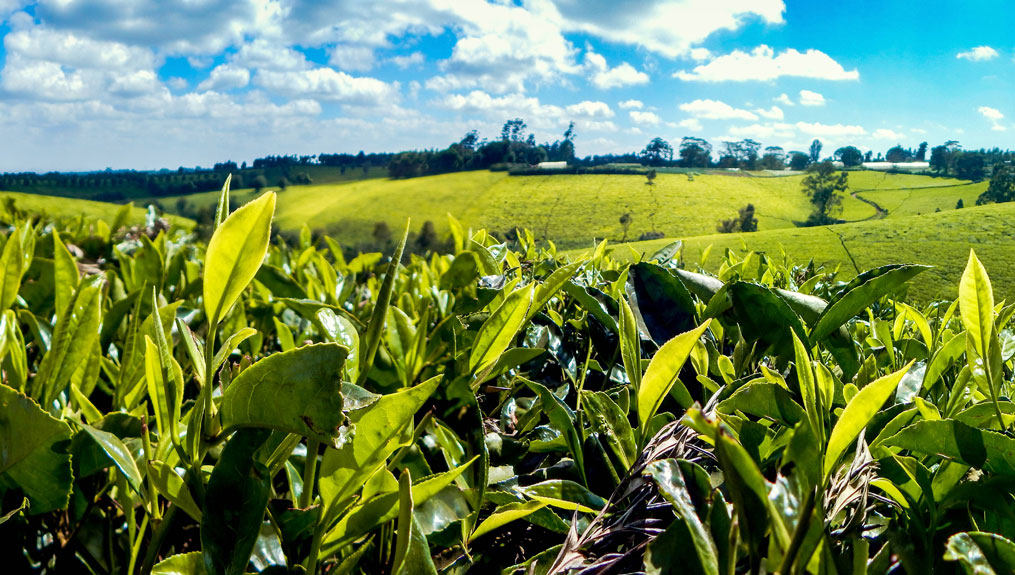This month we’re examining the interplay of food and beverage: how the two can be used together to strengthen brand identity, curate a customer experience, elevate quality in the café, and provide opportunities for education. But tea—chai in particular—is often overshadowed by talk of coffee and brunch menus, sometimes forgotten entirely. Amy Rothstein noticed the dearth of quality chai available around her and decided to do something about it. Rothstein’s special attention to ingredients and quality products was a perfect complement to this month’s special food issue. We asked her to share her story.
[I] moved to New York City in 2012 to pursue a graduate degree in food studies at NYU. With an interest in food and a Brooklyn address, I quickly developed an interest in craft coffee, popping into cafés around my neighborhood and taking in the third-wave scene.
But the more I visited coffee shops, the more I grew frustrated. The neighborhood roasters featured local dairy farmers alongside high-end pastries and baked goods from around New York City. Why wasn’t there any artisanal-quality chai available in these shops? The concentrates I came across were less than impressive and none were made locally. Chai was even difficult to find in many places; shop owners didn’t like the commercial options available and without a local purveyor as an alternative, they opted not to offer chai at all. It was a confusing gap in the market.
My frustration pushed me to start developing my own chai recipe. I wanted to start a company focused on good ingredients, a simple recipe, and a pure process, mirroring the attention to detail shown to other products sold in cafés.
I hadn’t ever made chai before, so I started learning. I met with a friend of my mother—an Indian chef—and she gave me a 101-level class on chai. I learned about the history of the beverage, Indian culture, and how chai is consumed in the country. I even learned there is no set recipe for the tea.
Chai is the most common drink in India and a symbol of Indian culture. The beverage is more of a category than a recipe; it varies by region because of the local spices used. The development of chai was influenced by British colonization in India. The British introduced the concept of tea time to their plantation workers in an effort to increase domestic sales of black tea. But much of the tea that was introduced was low quality and very bitter. As a result, workers would add milk and sugar, along with spices that were pleasing to the Indian palate.

Many American chai products have drifted far from the tea’s roots. The chai found on many store shelves—and in many coffee shops—has skewed consumers’ perceptions of the drink. Boxed concentrates are often very sweet and made with spice extracts and natural colorings rather than real ingredients. It’s difficult to distinguish individual spices, and the sweetness is often overpowering.
When I began experimenting with chai recipes, I wanted to help consumers reconnect with the roots of chai, offering a tea blended with fresh spices, each detectable as its own flavor. I started with a long list of spices—including fennel, anise, allspice, and nutmeg—then narrowed it down based on my taste. I knew I wanted to include fresh ginger to enhance the freshness of the beverage. After countless trials, I finalized my recipe and launched Dona Chai in March 2014.
We use a recipe of fresh ginger, cinnamon, cardamom, cloves, and black pepper, steeped with pure black tea, then sweetened just enough to honor the flavors of the spices. The source of our tea and spices rotates based on seasonal availability; like coffee roasters, we source and cup each of our ingredients before they’re used. This attention to detail has led to partnerships with hundreds of third-wave coffee shops and specialty stores around the country who share values of good quality and good ingredients.
Chai is an exciting addition to any café menu, and can highlight a business’s commitment to thoughtfully sourced ingredients, enticing flavors, and careful attention to detail. Depending on the country of origin and variety of a spice, the tea can take on many different flavors. With a full palate of spices to work with, the options for chai-and-food pairings are vast. This variability makes for an explorative tasting experience that encourages curiosity and attentiveness, both for you and your customer.
—Amy Rothstein is the founder of Dona Chai, a Brooklyn-based tea concentrate company.















